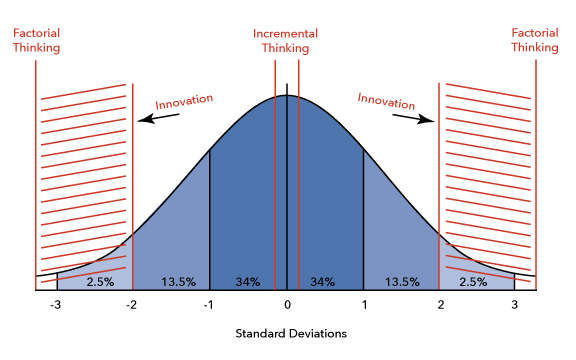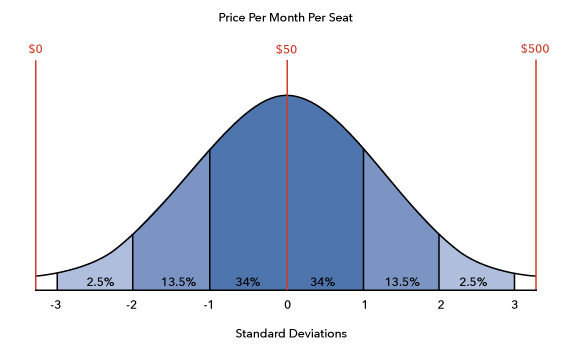How to Disrupt Your Industry Using Factorial Thinking
Many businesses focus on creating products that fit into the market. Finding comfort zones of price and features relative to other alternatives in the market. This approach might make you feel good because you are conceptually hitting the largest possible number of potential current customers, but it forces you to compete on price, a losing business model. If you want to truly disrupt your industry and build something great, you must change your thinking.
In the book Zero to One, Peter Thiel describes meaningful innovation as being a “10x solution” or a solution that is 10 times better than the next available alternative. As the founder of PayPal, Thiel intended to “create the world’s first digital currency.” He failed at that initial goal but because he thought factorially instead of incrementally he still created one of the first billion-dollar digital companies.
Incremental vs. Factorial Thinking
Innovative thinking happens from outside of the bell curve and moves in – that is starting with factorial thinking and moving towards the middle of the bell curve. Innovation rarely happens with an incremental idea and moves outward.

Incremental thinking is weak thinking. Incremental thinking would be a slight improvement or differentiation in the market. An easy way to tell if your idea is incremental is if it can be easily or quickly copied by a competitor without much change to their infrastructure. Simple examples of incremental ideas would be things like having a sale, giving quantity discounts or offering free shipping.
Factorial Thinking is innovative thinking. A good factorial idea is one that you are not sure how you can pull off. Perhaps the idea is so far outside of the market that it is impossible or near impossible, such as Thiel’s digital currency. This means you are on the right track. Now, envision your organization operating under the constraint of this idea. How might you engineer a new business model with this idea? How might you monetize it? If you ask these questions you will likely end up with an idea that falls in what we call the “innovation zone.” It isn’t quite what you set out to accomplish but it led to an idea that allowed you to truly innovate.
Application
All markets and industries operate relative to each other in the kinds of products and services they provide, prices, level of customer service, speed and all types of other attributes. Each of these attributes have their own bell curve. A bell curve for price, for example, might look like this if you are a SAAS (Software As A Service) company that charges per month, per seat for a software product.

So, for instance let’s say your company sells a software program for $50 per month, per user and the average of your competitors is also $50 per month, per user. The fact that you are aligned with the market mean price point should naturally give you comfort but that comfort just means you will blend in with the rest of the alternatives in the market.
Force yourself to consider the far left of the bell curve and ask yourself, “if my product was $0 per month how might I monetize my product? Could I do a freemium model and put pressure on my competition by eliminating a barrier to entry? Can I charge through a channel partner or can I monetize the data I collect? If your industry is charging for a product that can be monetized creatively in another way you can disrupt your industry.
On the other extreme, if my product was $500 month per seat what value would we have to provide to get someone to actually buy and justify that premium? Maybe we fly out to our customers and train their team on site. Or maybe we fly them to us to get trained? Can we create a strategic partnership with a supplier or vendor to create a truly amazing experience?
In either case, you may not be able to achieve either extreme of the bell curve but the ideation process you think through will inevitably create an innovative idea where you might find a new monetization strategy (on the left extreme) or create a new feature in your industry (on the right extreme), both of which can be viable, actionable competitive advantages that allow you to disrupt your industry.
Ask yourself, are you thinking incrementally or factorially? Remember, the farther you stretch your mind on either side of the bell curve, the more innovative you will become. Conversely, the closer you are to the middle of your industry bell curve, the more you will disappear and blend in with your competitors.